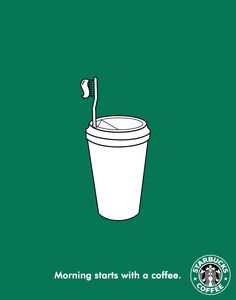
Radio advertising was relatively new in the 1920s. Radio advertising was still in its infancy. Some companies and agencies took advantage. Radio ads were more creative than print advertisements. They targeted certain people using specific words, images and phrases. This helped advertisers convince their consumers to buy their product.
As the industry grew in popularity, companies started to hire musical acts to perform for commercially sponsored programs. As more people purchased radios and started to listen to them, the popularity of this medium grew. Commercially sponsored programming was carried on most stations by the end of 1920. The first advertisers were large corporations.
Advertisers started testing radio's effectiveness as a marketing tool. Remick’s Music Store, for example, purchased a large ad in a local paper promoting KFC in March 1922. Later in the year, they exchanged sponsorship for a weekly program.
Other companies understood the importance of radio advertising. They embraced it. Queensboro Corporation of New York and American Telephone and Telegraph Company ("AT&T") were among the first radio advertiser. These two companies weren’t the only ones advertising on radio, but their participation was significant.

As the radio industry progressed, smaller groups of stations began to cover areas that were sparsely populated. These smaller networks, sometimes called "networks", allowed advertisers to reach a wider audience.
Radio advertising became very lucrative. American companies spent $3Billion advertising in 1929. But the Great Depression decimated the industry. This was due to several factors.
Advertisers hoped that radio advertising would convince people to buy their products. Radio advertising was highly observable. It was also a relatively cost-effective way to reach a target audience.
Another reason was that radio was considered a relaxing and entertaining form of entertainment. Radio listeners could tune in at any time. Many people decided that material goods were the best way to spend money during the Great Depression.
Advertisers aimed to persuade customers to choose their products over the competition. Advertisers claimed the products were safer, better, or easier to use. During the 1920s, Americans had more money and believed their success was dependent on their ability to buy more material goods.

The 1920s marked a major transition in the American identity. Advertising had more options to reach their audience because more people had radios. Radio advertising was also used by businesses to increase brand recognition. Many companies hired professional window dressers to put on billboards and window displays, and other companies hired hired boys to walk down the street wearing sandwich boards.
In the beginning of radio advertising, advertisers concentrated on testing the benefits offered by premium offers. They also measured radio frequency and its circulation. When they found that their products were gaining a lot of popularity, they continued to test it. Until the mid-1920s, a few radio stations did not allow commercials to be carried on their stations.
FAQ
What are the basics of print advertising?
Print advertising can be a powerful medium for communicating with customers. Print advertising is used extensively by companies to promote their products or services. The main goal is to catch the attention and buy from the consumer.
Print ads are usually short (one page) and contain text, pictures, logos, and other graphics. These ads may include sound, animation and video as well as hyperlinks.
Here are the main types and classifications of print advertising:
1. Brochures – These are large format printed pieces that are intended to draw people into stores. Brochures are filled with eye-catching designs, colorful pictures, and attractive graphics.
2. Catalogues – These are smaller versions to brochures. These are typically sent to customers who ask for specific information.
3. Flyers – These are tiny pieces of paper distributed at events like concerts or fairs. They are generally free but must be paid for if they are handed out at retail outlets.
4. Posters - These flyers can be larger than the ones you see on the flyer. They can be displayed on fences, walls, or buildings. They are created by computer software programs in order to grab passersby's eyes.
5. Direct mail - This refers to letters or postcards mailed directly to potential customers. Companies send these out periodically to remind existing customers about their business.
6. Newspaper Ads – These are ads that appear in newspapers or magazines. These are typically quite long and often contain text as well images.
Is there a way to get no cost traffic?
Refers to traffic that comes from organic search results, without the need for advertising. This traffic is known as natural or organic traffic. There are many ways you can get free traffic.
Article Marketing is an excellent way to generate free traffic. Paying ads can be more costly than CPC. Article marketing can also be referred to content marketing.
Social Media Marketing: Social media sites such as Facebook, Twitter, LinkedIn, and LinkedIn make it easy to promote your company through advertising. These sites allow you to update, share photos, and develop relationships with people who could become customers. Many businesses pay to advertise on social media sites because they want to reach more people at a cheaper price.
Blogging - Another great way to generate traffic is blogging. If you create quality content that people love to read, visitors will find you. After you attract visitors to your blog, you can make money by selling products or other services.
Email Marketing – Although email marketing was around long before the internet, it's still one of most effective ways to drive website traffic. You can grow your list and eventually sell to subscribers by sending them emails frequently.
What is radio advertising?
You should understand how the different types of media affect each other. Remember that all media types are complementary, not competing.
Radio is best utilized as an extension to TV advertising. It enhances television by reinforcing important messages and providing additional details.
For radio listeners, TV commercials can often be too long. Radio ads are typically shorter and less costly.
What is an advertisement campaign?
An advertising campaign is a series of advertisements designed to promote a product or service. It can also refer entirely to the production of such ads.
The Latin word for "to Sell" gives rise to the term "ad". The first known use was by Marcus Terentius Varro (116-27 BC), who used it as a verb meaning "to make a sale."
Advertising campaigns are most often done by large agencies or businesses. These campaigns may include many media types such as print, television, radio and the internet.
Advertising campaigns can last up to six months and have specific goals. One example is that some campaigns seek to create awareness while others are more focused on increasing sales.
How much does it take to advertise on social networks?
It is important to know that advertising on social media platforms is not free if you decide to do this route. You'll be charged monthly according to how long you spend on each platform.
Facebook - $0.10 per 1,000 impressions
Twitter: $0.20 per 1,000 impressions (if your tweet is on Twitter)
If you send invitations, Linkedin: $0.30 per 1,000 impressions
Instagram: $0.50 per 1,000 impressions
Snapchat – $0.60 per 1,000 impressions ($0.40 for each user)
YouTube - $0.25 Per 1,000 Views
Tumblr - $0.15 per 1,000 impressions for text posts.
Pinterest - $0.05 per 1,000 impressions per month
Google + - $0.15-$0.20 per 1 million impressions
Tumblr - $0.15- $0.20 per 100,000 impressions
Vimeo - $0.20 - $0.25 for 10,000 impressions
Soundcloud - $0.20 - $0.0.25 for 1,000,000 plays
StumbleUpon - $0.20 -$0.25 per 1 billion pageviews
Digg – $0.20 - 0.25 per 1000 diggs
Reddit: $0.20-$0.25 for 1000 comments
Wordpress - $0.20 to-$0.25 for 500 comments
Flickr - $0.20 -- $0.25 per 5,000 photo uploads
What is an advertiser buyer?
An advertiser can buy advertising space in TV, radio, or print media.
Advertisers pay only for the time their message is to appear.
They don't necessarily look for the best advertisement, but instead seek out the most effective way to reach their target market.
The advertiser may have specific demographic information about their potential customers, such as age, gender, income level, marital status, occupation, hobbies, interests, etc.
Advertisers can use these data to determine the best medium for them. Direct mail might be more effective with older customers, for example.
Advertisers also evaluate the competition. Advertisers may choose to place ads near competitors if there are similar businesses in the area.
In addition, advertisers consider the size of their budget and the amount of time they have to spend their money before it expires.
What is branding?
Your brand is your way of communicating who you are as well as what you stand behind. It is how people remember your name.
Branding refers to creating a brand that is memorable for your company. Branding is more than a logo. It encompasses everything, from the physical appearance of your company to the voice and tone used by your employees.
A strong brand helps customers feel confident in buying from you because they know exactly what they're getting. This gives customers the confidence to choose your products over other brands.
Apple is a good example of a company that has a strong brand. Apple is a well-known brand for its elegant design, high quality products and excellent customer service.
Apple's brand is synonymous with technology. Apple is the brand people think of whenever they see a smartphone or computer.
If you're considering starting a new business, you should consider developing a brand before launching. This will give your company a face and personality.
Statistics
- In 1919 it was 2.5 percent of gross domestic product (GDP) in the US, and it averaged 2.2 percent of GDP between then and at least 2007, though it may have declined dramatically since the Great Recession. (en.wikipedia.org)
- Google will display whichever ad type (CPM or CPC) is expected to earn more revenue for the publisher, which is in Google's best interest since they take a 32% share of the revenue. (quicksprout.com)
- Advertising spending as a share of GDP was about 2.9 percent. (en.wikipedia.org)
- Advertising's projected distribution for 2017 was 40.4% on TV, 33.3% on digital, 9% on newspapers, 6.9% on magazines, 5.8% outdoor, and 4.3% on radio. (en.wikipedia.org)
External Links
How To
How can you advertise on a billboard
While billboards have existed since the late 1800s they became more popular after World War II, when they were installed along roadsides and highways. Most billboards contain text advertising. However, some have photographs or art. Many billboards are static. Others display messages that change periodically, such a weather forecast, stock price, stock scores, political events, or stock market prices.
Although most billboards can be found outdoors, there are also indoor options. Outdoor billboards are usually seen by motorists passing by them several times per day. Indoor billboards may only be viewed once every few year. Because it has three layers, the most common outdoor billboard type is the "cubic", which is made of two sheets glass sandwiched by a layer fiberglass mesh, This design allows air movement through the billboard. It is cool in hot weather, and warm when it's cold.
Billboard Advertising Inc. is a company that advertiser pay to have their ads displayed on its billboards. It owns and operates many North America's largest billboard advertising companies. These companies then make space available on billboards for advertisers. These spaces are bought by advertisers based on their advertising budget. They choose the best areas for their ads based primarily on the location of people who drive or walk most often.
Billboard Advertising Inc. is licensed to sell ad space and to erect signs in cities. Some cities allow billboards anywhere; others restrict them to certain areas. Chicago, for example, requires billboards to be kept at least 1,000 feet away from highways. Other cities stipulate that billboards must be at least 500 feet away from any school or church.
Billboard Advertising Inc. has contracts to promote products and services throughout the United States, including Florida, California, Nevada, Texas, Arizona, New Mexico, Colorado, Washington, Oregon, Idaho, Utah, Wyoming, Alaska, Hawaii, Canada, Puerto Rico, Guam, Virgin Islands, and American Samoa.